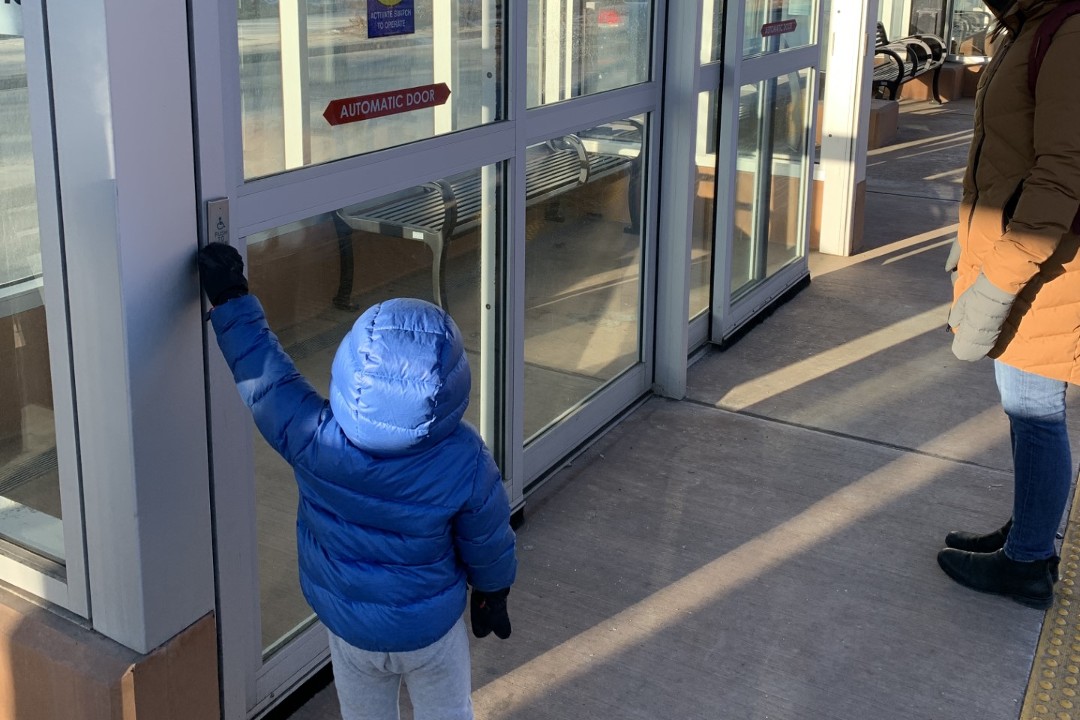Passengers on Edmonton's months-old $1.8 billion Valley Line LRT system have not been able to use many of the heated and accessible shelters at stations, features that have "never worked properly from day one," according to one observer.
That same rider posted that the issue becomes increasingly unacceptable during extreme weather, such as the cold snap in mid-January. "And now, at -30, it's particularly ridiculous," they wrote on Jan. 11 when temperatures hit 50-year lows.
Ryan Birch, Edmonton Transit Service's director of operations, said those responsible for fixing the shelters recognize the challenges. "TransEd is aware of the issues regarding shelter doors and heaters at some Valley Line Southeast stops, and their maintenance staff continue to conduct repairs as quickly as possible," Birch told Taproot. "It is believed that most of the issues are the result of vandalism."
Under the public-private partnership between TransEd and government partners that include the city, TransEd will operate and maintain the southeast portion of the Valley Line until 2050.
Birch said heater and door controls have had "protective covers and other components (that) were removed by members of the public." Additionally, some sliding doors at shelters were pushed or pulled off their tracks.
TransEd began testing the shelter issues in November. During this testing, they found malfunctioning heaters as well. The heaters have been fixed but the door issues persist. "While most operational issues were addressed (in November), TransEd staff continue to respond to vandalism incidents as they occur," Birch said. "Should these issues continue, TransEd and the city will collaborate on a long-term solution."
Riders gain access to the station shelters by pressing a button that displays a wheelchair. The shelters are an important accessibility feature and this aligns with the city's Corporate Accessibility Plan.
That plan, endorsed by council in 2019 and in place since 2021, helps the city measure how well it implements the Accessibility for People with Disabilities policy. The Valley Line design pre-dates the 2019 plan, said Yogi Subramonian, co-chair of the city's corporate accessibility working committee.
Still, Birch said "accessibility was an important component" in the Valley Line's design. "These stops are designed with clear sight lines, open structures, and accessible connections to the street," he said.

A young transit rider unsuccessfully attempts to open a shelter door at a station on the Valley Line LRT system. Riders say many of the doors have not worked since the system opened in November. (Tim Querengesser)
Taproot spoke to city accessibility officials about ongoing work to improve infrastructure design in future.
The access design guide within city's overall plan now creates an accessibility lens that guides construction projects "above and beyond the building code" Subramonian said.
The plan functions as a city guideline but also ensures "clear, open communication with the public on what we're doing," added Heather Craig, a co-chair of the city's corporate accessibility working committee.
Craig said it also keeps the city accountable, as they track and internally update the actions quarterly.
The plan is still in progress, but tangible accomplishments have already been put in place or are in the works, Craig said.
"One of them was our accessible communication services," Craig said. "So, making sure that we are providing American Sign Language or real-time captioning in our registered recreation programs. So that was a pilot we did for a year that went really well that we are transitioning now to become a permanent program within rec centre."
Subramonian said creating awareness about accessibility seems to be working. "I hear about accessibility conversation a lot in the corporation, way more than we used to talk about it."
The plan was implemented in 2021 and closes at the end of June 2024. A progress report released in November 2023 indicated that about half of the goals were completed. The rest were in progress.
One goal that remains in progress is creating a transit rider panel of members with disabilities to gain feedback on potential changes to LRT vehicles on the Capital Line. "Panel feedback will be used to inform decisions around potential purchasing and retrofitting of transit vehicles," the report reads. "Public engagement has been conducted regarding the accessibility features of the planned Capital Line replacement of LRT vehicles."
Unfinished objectives will be rolled over into the next iteration of the plan.
"Not all actions are intended to be closed out and completed by (the) end of three years," Subramonian said. "For example, in my department, we identified a couple of actions, which are long-term goals. So it will be rolled into the next plan because it's faced with multiple implementation activities."
